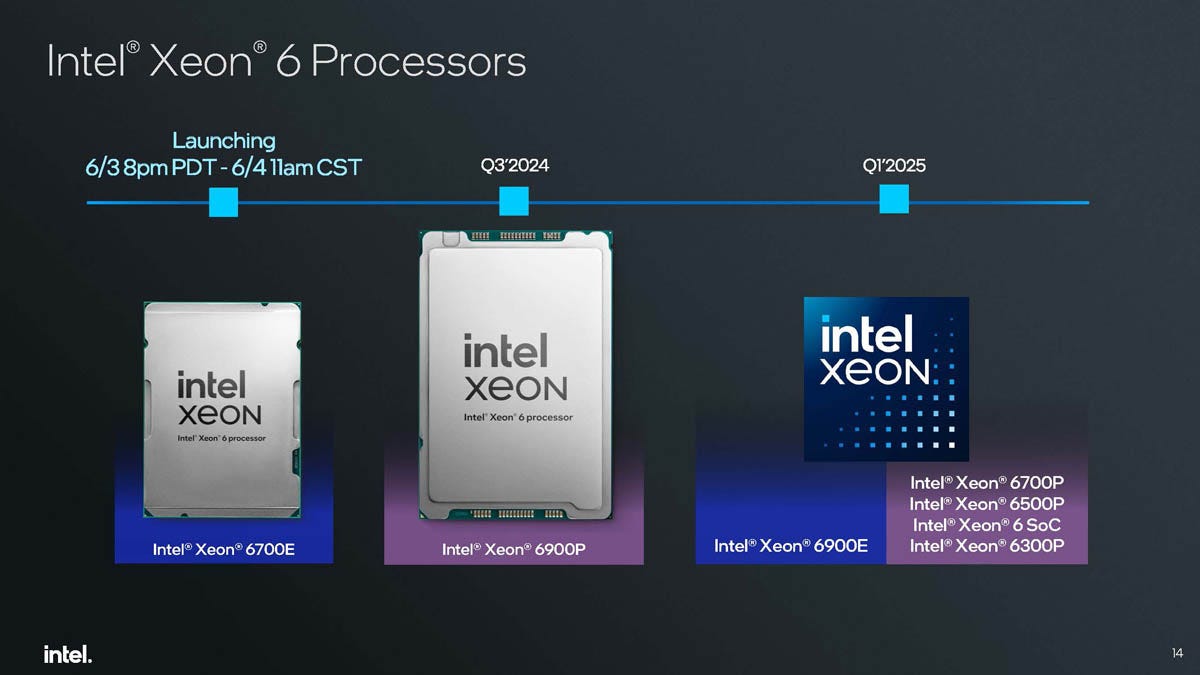Intel's New High-Core Count CPU is Making a Major Change
It makes sense, but it is good news for AMD
In 2024, we saw the AMD and Intel strategies around cloud-native compute diverge. For AMD, the path was relatively straightforward. The AMD EPYC 9004 “Bergamo” line with its Zen 4c cores made way for the newer Zen 5c cores in the AMD EPYC 9005 “Turin Dense.” Intel, on the other hand, went with an optimized core architecture, bifurcating its Xeon line into its 6000P (Granite Rapids) and 6000E (Sierra Forest) lines. Further, it has a larger socket Xeon 6900 series and a mid-sized socket Xeon 6700 series. In our Intel Xeon 6700E Sierra Forest-SP launch piece, we showed the roll-out plan from mid-2024.
In September 2024, just before the close of Q3, Intel released its Granite Rapids-AP or the Intel Xeon 6900P series on schedule taking back the high-end CPU market at least for a time. Since November of 2024, we have heard rumblings about an important change. It actually makes sense why Intel would do this to its E-core platform, even as it is probably seeing better success than it anticipated with its Xeon 6700E series. First-generation architectures are notoriously difficult to sell, but the Xeon 6700E series with 144 cores at under 1.8W/ core is really intriguing.
Ever since November, we have chatted with many OEMs about the upcoming 288 core model. To be transparent, I told Intel I thought it should launch Sierra Forest-AP (Xeon 6900E) at the very end of 2024, even if it was just a paper launch, so that 2024’s core counts stopped with Intel at 288 cores and AMD at 192 cores (but 384 threads) per socket. Moving that launch from Q1’2025 to Q4’2024 would have changed a narrative.
It turns out Intel’s strategy is quite different from what I offered. That leads us to how Intel is changing its Sierra Forest lineup in a small but meaningful way for 2025.




